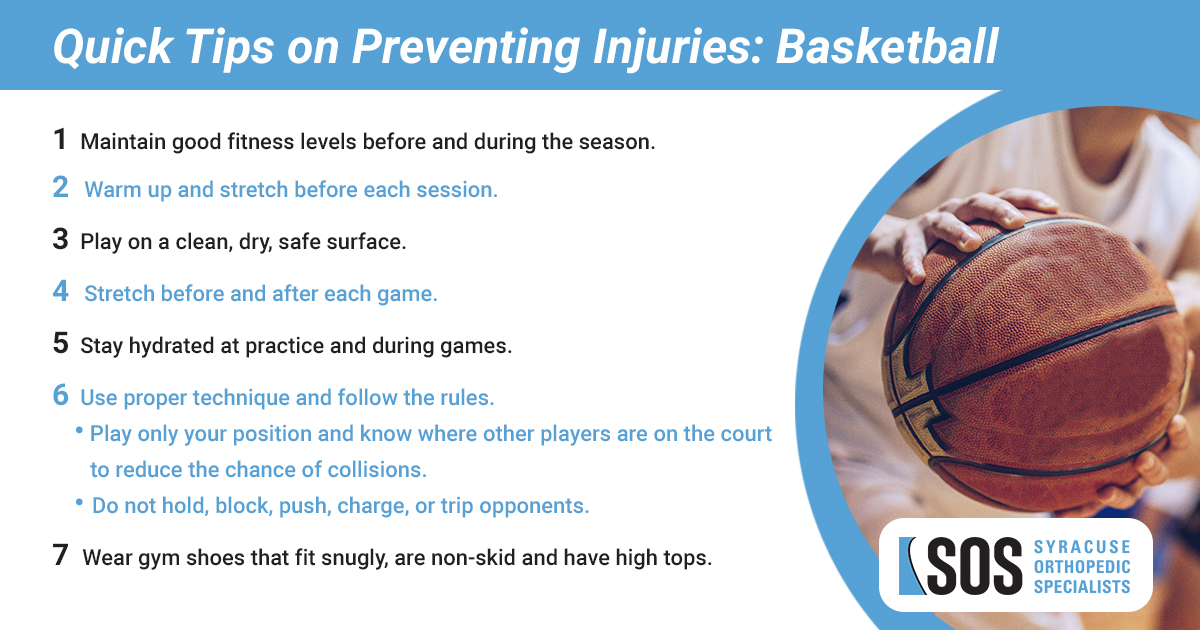
The 2024 Paris Olympic Games include 19 days of competition, from July 26 – August 11. Athletes from all over the globe, representing more than 200 different national Olympic committees, will convene in Paris to participate in the 33rd Olympiad. The team at Syracuse Orthopedic Specialists are ready to root for Team USA in all events! The Olympics always promise great athleticism, drama, and thrills. While spectators in Paris and around the world are waiting for their favorites to compete, the surgeons and medical specialists at SOS note that at the level of play, there are risks for athletes.
The Opening Ceremony to officially start the competition will be held on Friday, July 26, and the two US athletes chosen to bear the American flag during it are NBA veteran superstar, LeBron James, and rising tennis star, Coco Gauff. James will be playing in his fourth Olympics and going for his third gold medal. As he joins his teammates on the court, James, and other ballers should be aware of the risk of injury.
Basketball is a high-intensity sport that demands a combination of agility, speed, strength, and precision. The physical demands and repetitive motions inherent in the game also pose significant orthopedic risks to players. Common injuries include sprains, strains, fractures, and overuse injuries, which can affect various parts of the body, particularly the ankles, knees, and lower back. Ankle sprains are among the most frequent injuries in basketball, often occurring when players land awkwardly after jumping or when they pivot quickly. Preventive measures such as wearing supportive footwear and incorporating ankle-strengthening exercises into training routines can help mitigate these risks.
Knee injuries, including anterior cruciate ligament (ACL) tears and meniscus injuries, are also prevalent in basketball. These injuries often result from abrupt stops, changes in direction, or direct impact. ACL tears can be career-threatening and typically require surgical intervention followed by extensive rehabilitation. To reduce the likelihood of knee injuries, players should focus on strengthening the muscles around the knee, improving flexibility, and practicing proper techniques for jumping and landing.
Lower back pain and injuries can arise from the repetitive jumping and twisting motions required in basketball. Overuse injuries, such as stress fractures, can develop from the continuous high-impact activity. To prevent these issues, maintaining core strength, practicing good posture, and incorporating rest days into training schedules are essential. Understanding and addressing the orthopedic risks associated with basketball not only helps in preventing injuries but also ensures players' longevity and performance in the sport.
Team SOS hopes for healthy competition on the court as they cheer on Team USA to the gold!

